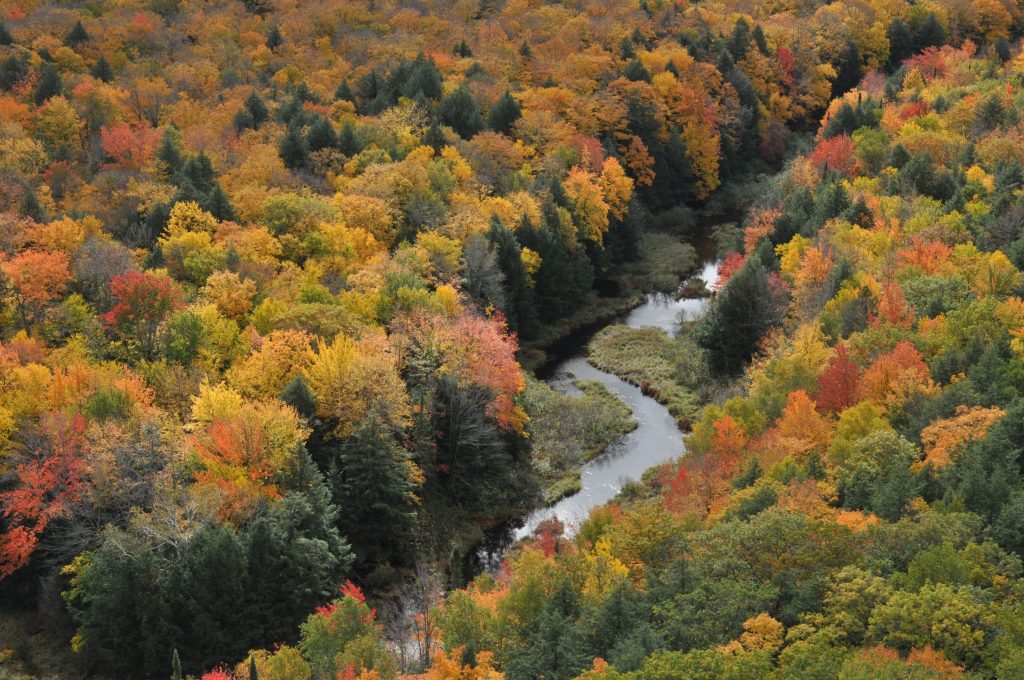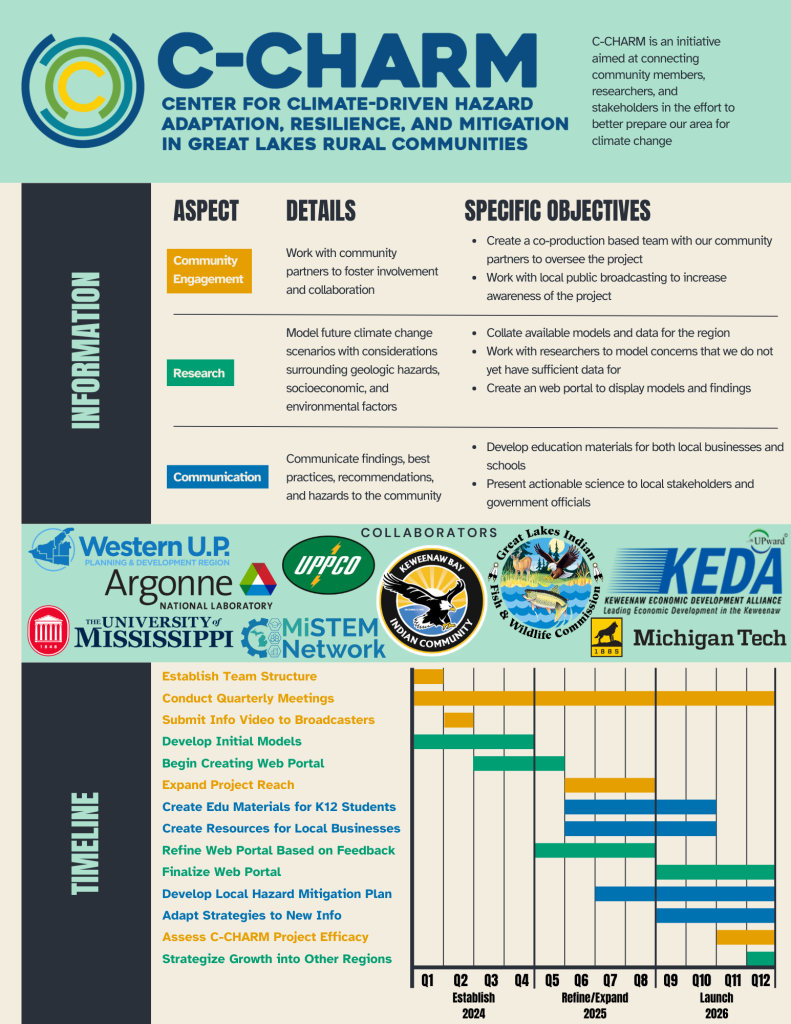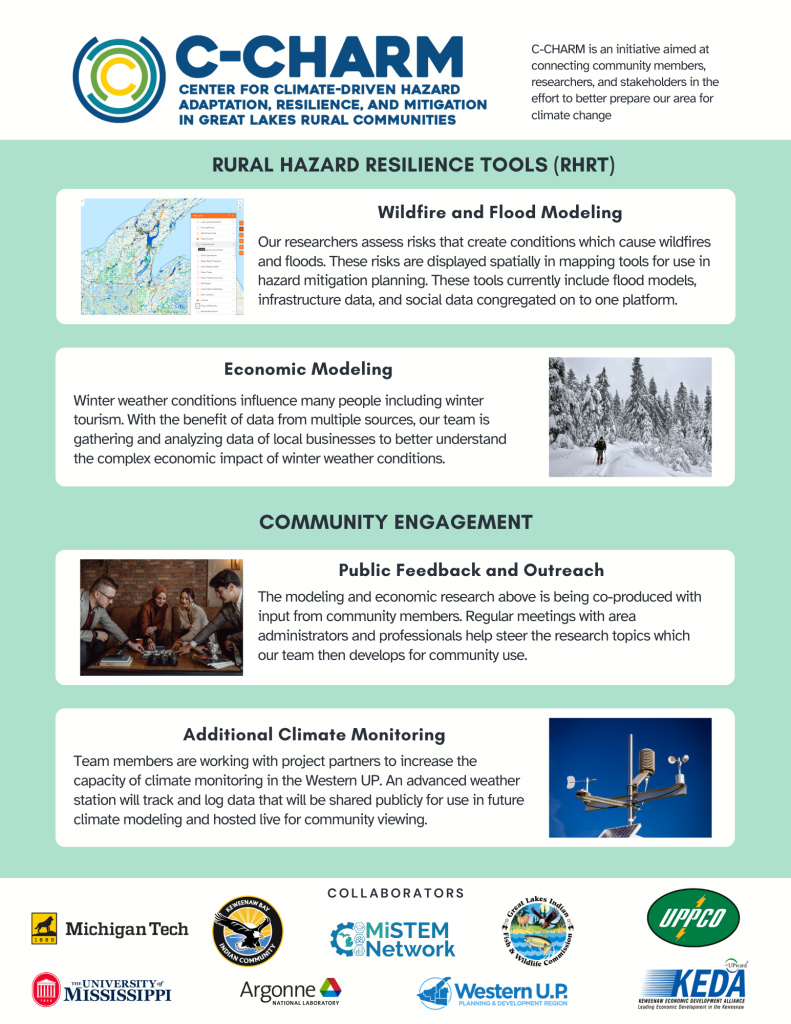Focus
The Center for Climate-driven Hazard Adaptation, Resilience, and Mitigation (C-CHARM) currently focuses on the six-county region of the Western Upper Peninsula of Michigan (WUP), located on the southern shore of Lake Superior. C-CHARM uses different types of computer models to study local weather patterns and extreme weather events. These models help predict how the changing climate might increase natural hazards and disrupt energy systems in communities and counties across the western Upper Peninsula.
As one of six Department of Energy-funded Climate Resilience Centers launched in 2023, C-CHARM is grounded in a collaborative approach that involves communities, governments, research institutions, and Department of Energy (DOE) national labs.
Co-production of Knowledge
C-CHARM works together with community members to create useful climate information. By combining local knowledge with scientific models, C-CHARM develops resources that help Tribal and local governments and communities in the western Upper Peninsula understand climate risks.. This shared information allows everyone to make better decisions about preparing for changing weather patterns and extreme weather events.



